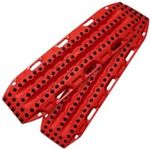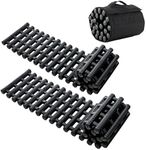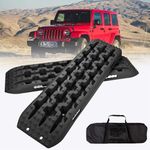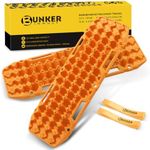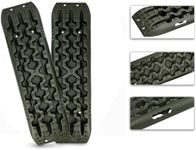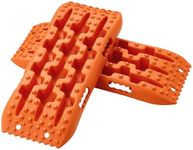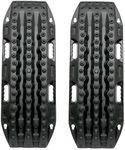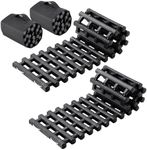Buying Guide for the Best Traction Boards
Traction boards are essential tools for off-road enthusiasts and adventurers. They provide the necessary grip to help your vehicle escape from sand, mud, snow, or any other challenging terrain. When choosing traction boards, it's important to consider various specifications to ensure you get the right product for your needs. Here are the key specs to look out for and how to navigate them.MaterialThe material of traction boards is crucial because it determines their durability and performance. Common materials include reinforced nylon, polypropylene, and aluminum. Reinforced nylon and polypropylene are lightweight and flexible, making them ideal for occasional use and easier handling. Aluminum boards are more durable and can withstand heavier loads, making them suitable for frequent use and extreme conditions. Choose a material based on how often you plan to use the boards and the types of terrain you expect to encounter.
Size and WeightSize and weight affect the portability and ease of use of traction boards. Larger boards provide more surface area for traction, which can be beneficial in deep sand or snow. However, they can be bulkier and harder to store. Smaller boards are more compact and easier to carry but may not offer as much grip. Weight is also a factor; lighter boards are easier to handle, while heavier boards may offer more stability. Consider the storage space in your vehicle and your physical ability to handle the boards when choosing the right size and weight.
Tread PatternThe tread pattern on traction boards is designed to grip your vehicle's tires and the ground. Different patterns offer varying levels of traction. Aggressive, deep treads are better for extreme conditions like deep mud or snow, while shallower treads may be sufficient for sand or less challenging terrains. Think about the typical environments you will be driving in and choose a tread pattern that matches those conditions.
Load CapacityLoad capacity refers to the maximum weight the traction boards can support. This is important to ensure the boards can handle the weight of your vehicle without breaking. Load capacities are usually listed in pounds or kilograms. For lighter vehicles like ATVs or small SUVs, lower load capacities may be sufficient. For heavier trucks or fully-loaded off-road vehicles, higher load capacities are necessary. Check your vehicle's weight and choose boards that can comfortably support it.
Ease of UseEase of use encompasses features like handles, mounting points, and the ability to link multiple boards together. Boards with built-in handles are easier to maneuver and position under your tires. Mounting points allow you to secure the boards to your vehicle for easy access. Some boards can be connected to create a longer track, which can be useful in certain situations. Consider how user-friendly the boards are and whether they have features that will make your off-road recovery easier.
Temperature ResistanceTemperature resistance is important if you plan to use your traction boards in extreme weather conditions. Some materials can become brittle in very cold temperatures or warp in high heat. Look for boards that are rated for a wide range of temperatures to ensure they will perform reliably in the environments you plan to explore. If you frequently travel in extreme climates, prioritize boards with high temperature resistance.
